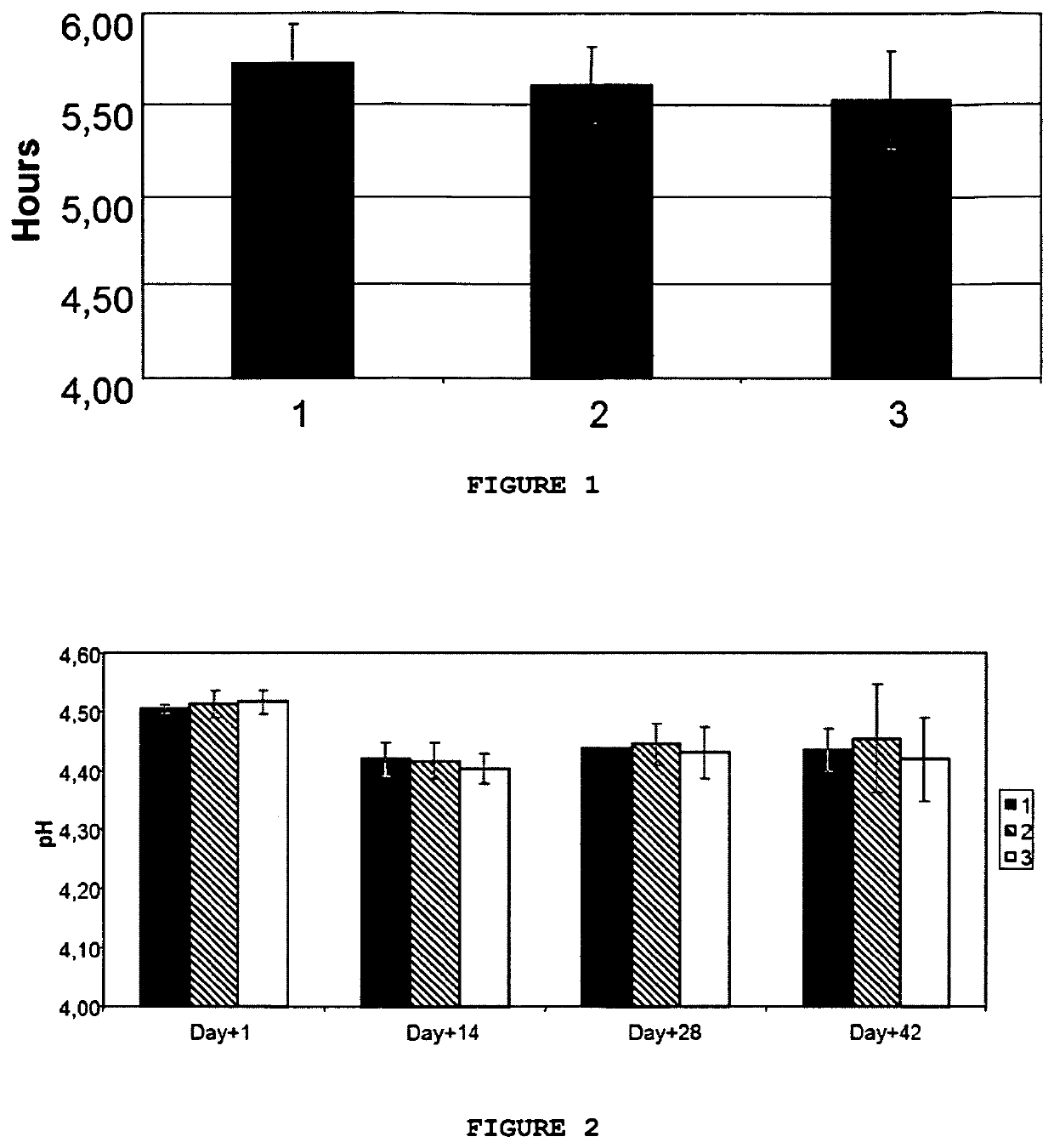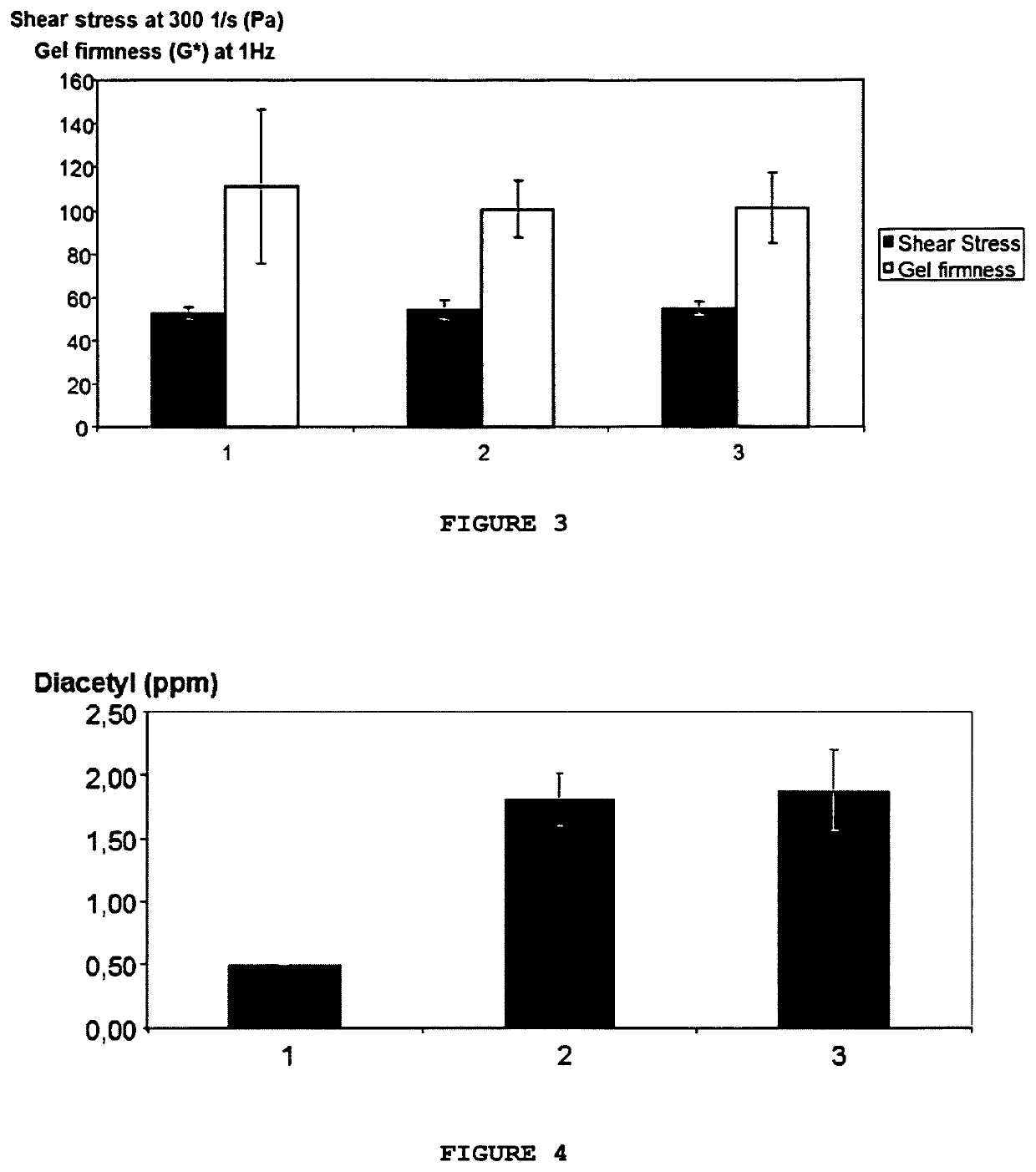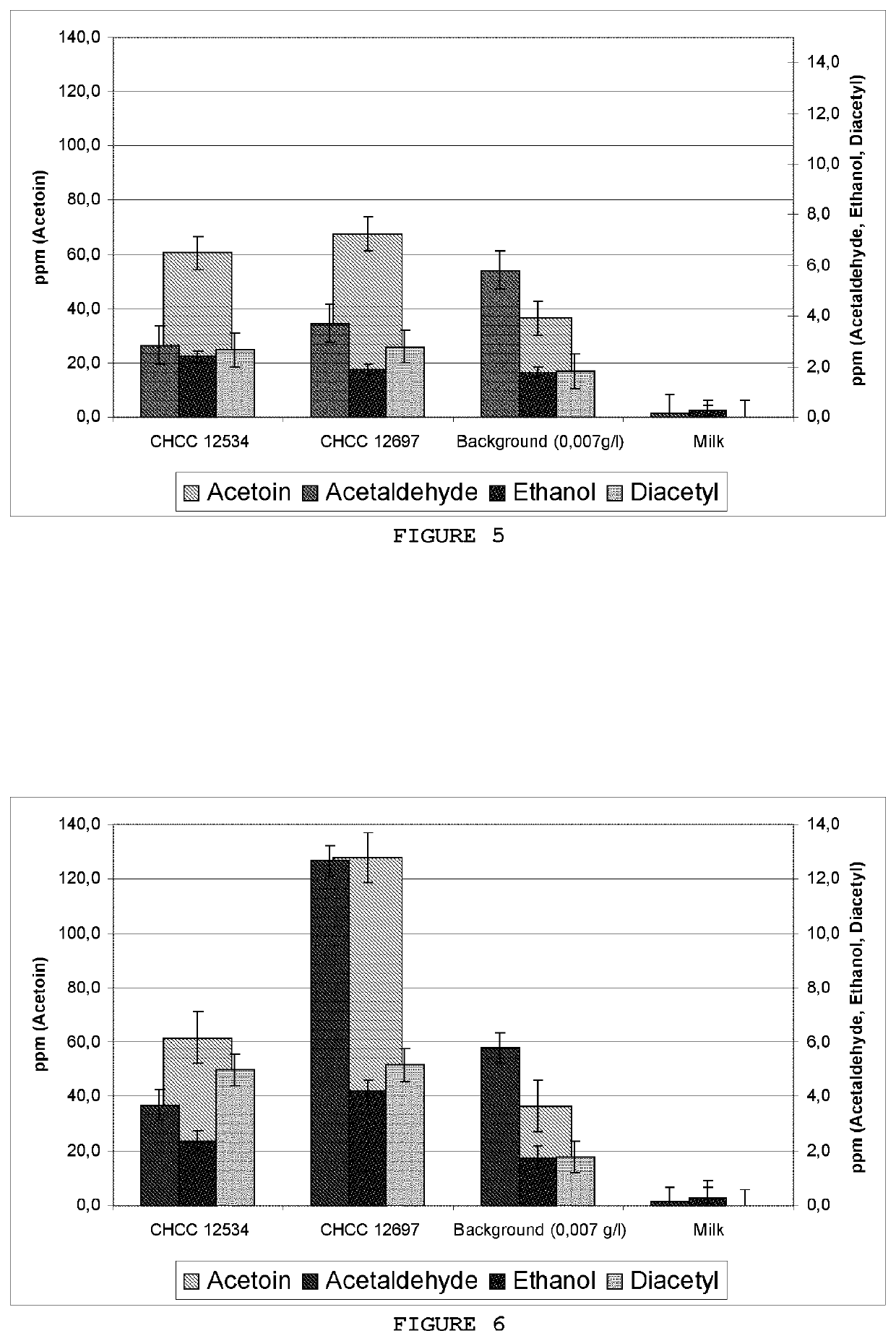Flavor-enhancing Lactobacillus rhamnosus
a technology of lactobacillus and rhamnosus, which is applied in the field of flavor enhancement i > lactobacillus rhamnosus /i >, can solve the problems of high cost, low fat dairy products often experience a lack of creamy flavor, and the preparation, concentration and addition of diacetyl and/or acetoin to food products are connected. achieve the effect of enhancing the flavor of dairy products
- Summary
- Abstract
- Description
- Claims
- Application Information
AI Technical Summary
Benefits of technology
Problems solved by technology
Method used
Image
Examples
example 2
r Yoghurt Make
[0088]Skim milk (DanMaelk, Arla) was fortified with 2% skim milk powder (Arta) and heat treated for 20 minutes at 90° C. This solution was inoculated with a background starter culture and with or not the Lactobacillus rhamnosus CHCC12697 strain.
[0089]The background starter culture used to make the yoghurt was composed of multiple strains of Streptococcus thermophilus and Lactobacillus bulgaricus in frozen Direct Vat Set (F-DVS) form inoculated at a rate of 0.02%. The Lactobacillus rhamnosus strain, in F-DVS form, was added to the background starter culture in the amounts described in the result section. At inoculation, cell counts were above 1×1010 cfu / g for the Streptococcus thermophilus and Lactobacillus rhamnosus strains and above 1×108 cfu / g for the Lactobacillus bulgaricus strains.
[0090]The inoculated solution was heated to 43° C. and fermented to pH 4.55. Time to reach pH 4.55 is the fermentation time which is shown in FIG. 1. When pH 4.55 was reached, the yoghur...
example 3
r Measuring the Evolution of pH
[0091]On the day of analysis (after 1, 14, 28 and 42 days of cold storage) one plastic cup containing the yoghurt was taken out of the cold storage and pH was measured using a pH meter (pHM240, MeterLab). Prior to measurements, the pH meter was calibrated (2-point calibration with 7.00 and 4.01 buffers). As the samples, the buffers used for calibration were stored cold. FIG. 2 shows the evolution of pH.
example 4
r Measuring Gel Firmness and Viscosity
[0092]Gel firmness was measured by the use of an Anton Paar rheometer with an automatic sample changer (Physica DSR Rheometer+ASC). The measuring bob was placed in the measuring cup containing 20 ml yoghurt sample, which had been stirred by hand and heated to 13° C. After the bob had been placed in the yoghurt sample a wait time was applied. By having a wait most of the structure broken by placing the bob in the cup was rebuild. Next, gel firmness was measured by oscillation. Here the strain was kept constant at 0.3% and the frequency was increased from 0.5 Hz to 30 Hz. From these measurements, the elastic modulus (G′) and the viscous modulus (G″) could be calculated, and from these the complex modulus (G*) was obtained:
G*=√{square root over (G2+G″2)}
[0093]G* at 1 Hz was then correlated to the gel firmness and used for comparison of the different samples (FIG. 3).
[0094]Using the same equipment (Anton Paar rheometer) the viscosity was measured by...
PUM
| Property | Measurement | Unit |
|---|---|---|
| temperature | aaaaa | aaaaa |
| concentrations | aaaaa | aaaaa |
| temperatures | aaaaa | aaaaa |
Abstract
Description
Claims
Application Information
 Login to View More
Login to View More - R&D
- Intellectual Property
- Life Sciences
- Materials
- Tech Scout
- Unparalleled Data Quality
- Higher Quality Content
- 60% Fewer Hallucinations
Browse by: Latest US Patents, China's latest patents, Technical Efficacy Thesaurus, Application Domain, Technology Topic, Popular Technical Reports.
© 2025 PatSnap. All rights reserved.Legal|Privacy policy|Modern Slavery Act Transparency Statement|Sitemap|About US| Contact US: help@patsnap.com



